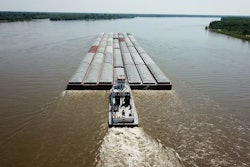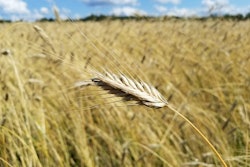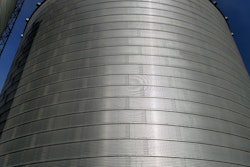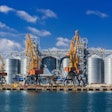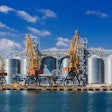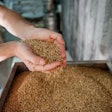
Commercial barge traffic on southern stretches of the Mississippi River was at a standstill on Tuesday as low water levels halted shipments of grain, fertilizer and other commodities on the critical waterway, shipping sources toldReuters.
The supply chain snarl adds to thealready tight barge supplywhich is threatening to reduce shipping volumes and increase rates as corn and soybean harvest begins.
Shippers fear that without substantial rain the jam will persist well into the busiest grain export period of the year.
Some 60% of all grain exported from the U.S. is shipped on the Mississippi River through the Port of New Orleans and the Port of South Louisiana, according to theNational Park Service.
Ingram Barge Co. declares force majeure
The largest U.S. barge operator warned customers it won’t be able to make good on deliveries.
Ingram Barge Co.declared force majeure in a letter to customers due to “near-historic” low water conditions on the Mississippi, reportsBloomberg.
Low water conditions causing issues
Drought has dwindled water levels along the biggest U.S. waterway by so much that vessels are running aground.
Around 100 tow boats hauling some 1,600 barges were lined up for miles waiting to pass through one trouble spot near Lake Providence, LA, that has been largely closed since late last week, shipping sources said.
The Coast Guard is respondingto grounded vessels in at least two places, near Stack Island in Louisiana and upriver near Memphis.
"Due to low water levels on the Lower Mississippi River, we have seen an increase in commercial vessel groundings,” said Capt. Eric Carrero, director of Western Rivers and Waterways at Coast Guard District Eight.
“In response, the Coast Guard established a Marine Transportation System Recovery Unit with our federal, state, local, and maritime industry partners to facilitate safe navigation and the continued flow of commerce along the affected waterways.”
TheNational Weather Servicesaid nearly all of the Mississippi River basin, from Minnesota through Louisiana, has seen below-normal rainfall over the past 30 days. The basin from St. Louis south has been largely dry for three months, and the forecast calls for the drought to continue, along with warmer-than-normal temperatures.
Shippers have been loading less cargo per barge so vessels sit higher on the water, and towing companies have reduced the number of barges per tow by nearly 40% as the low water conditions narrowed the navigable channel.
Army Corps monitoring low water levels
According toreports, officials with the U.S. Army Corps of Engineers said typically, tows are able to move 36 barges at a time. With the water level so low, shippers have voluntarily agreed to cut that to 25 barges.
The Army Corps says it isactively dredging the riverto keep the channel open and its water management office is closely monitoring the current conditions and forecasting future conditions.
“Based on a 28-day forecast, we do not see any areas where our dredging operations will not keep up with the forecasted falling river stages,” said Lou Dell’Orco, chief of operations.
The latestUSDA Grain Transportation Reportnoted 1,890 grain barges have unloaded in New Orleans since September 1, about 39% fewer than the five-year average.
“The tight barge supply is problematic for grain shippers heading into harvest,” the report stated. “Unless barge supply improves, the increased demand for barges from grain shippers during harvest will likely put even more upward pressure on barge rates.”





